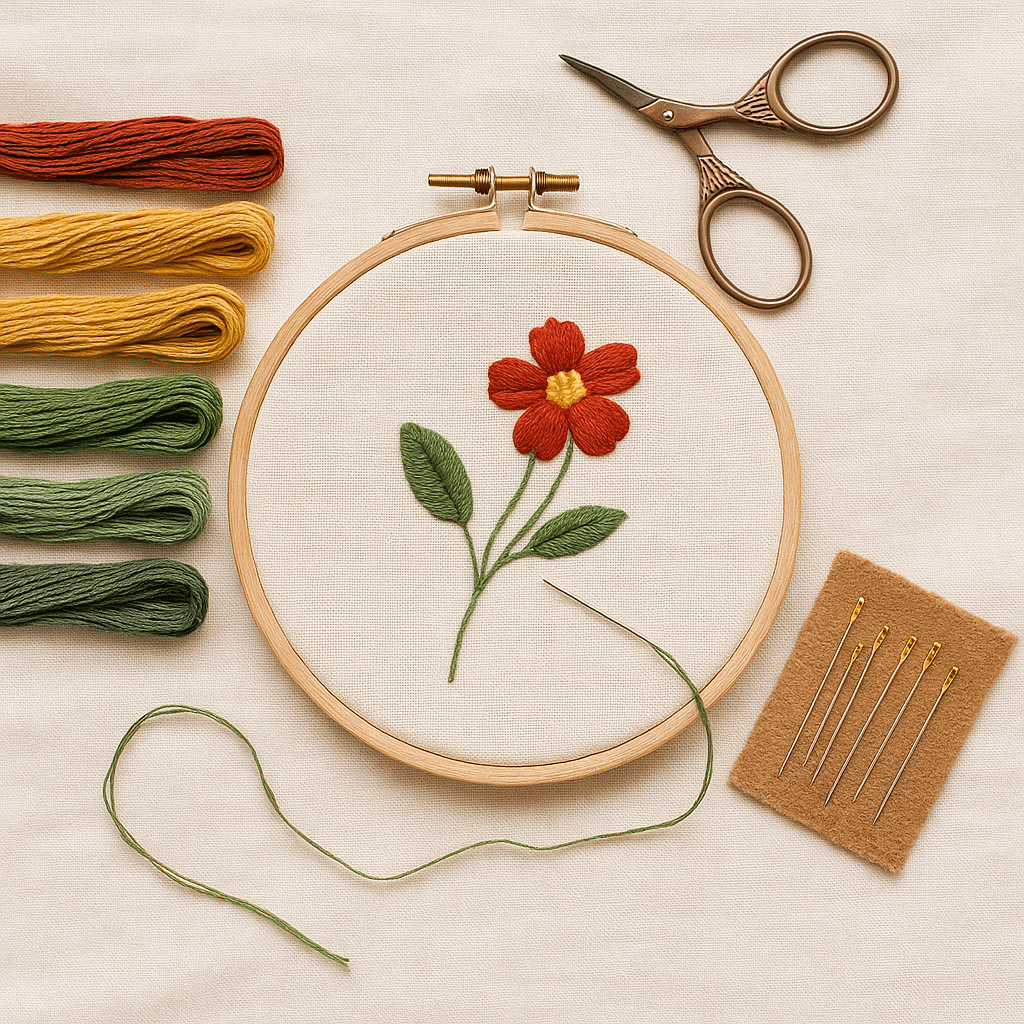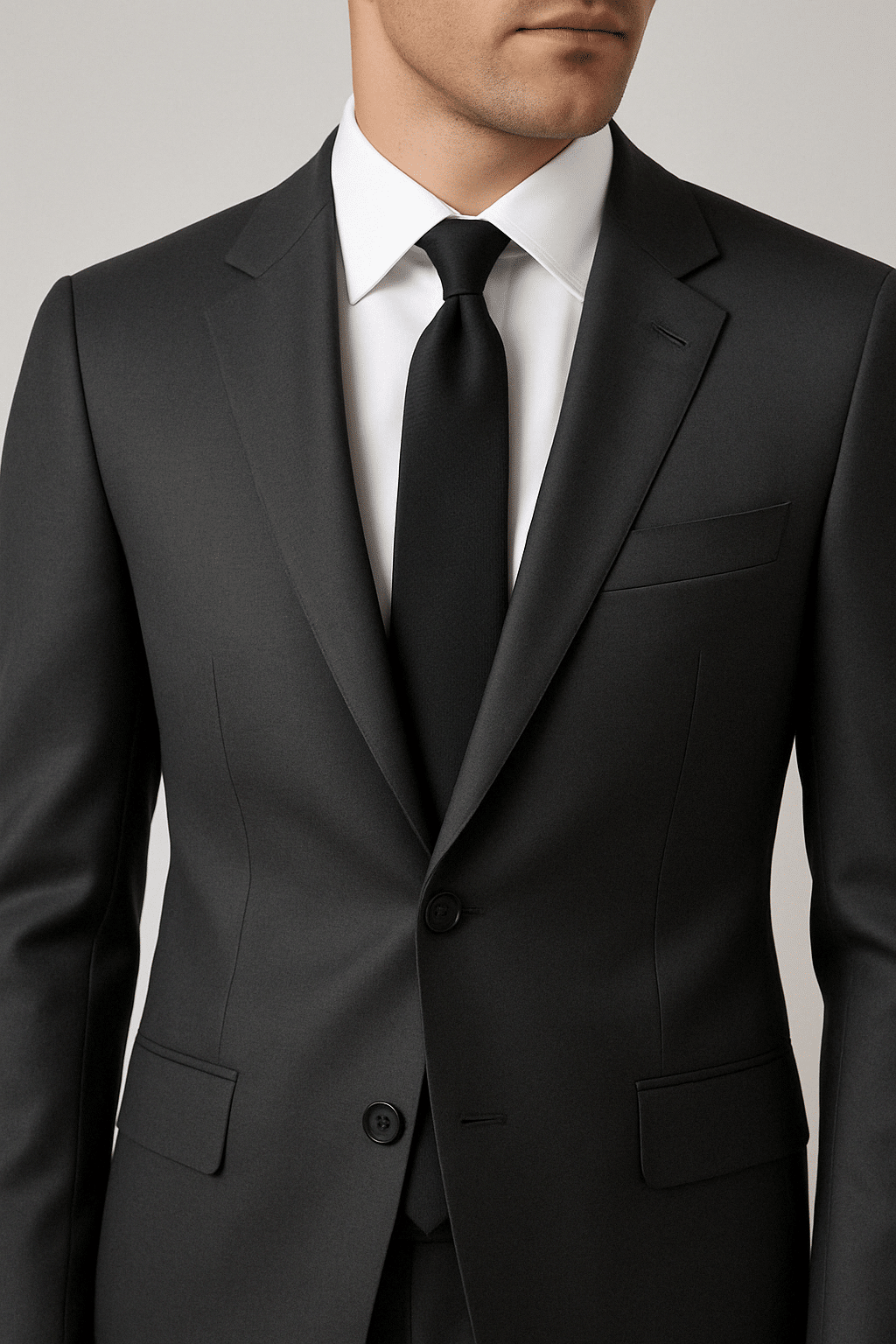Introduction
How to start embroidery is a question more and more people are asking, as the craft experiences a remarkable resurgence in today’s fashion and textile industries. According to Business Research Insights, the global embroidery market was valued at USD 1.54 billion in 2024 and is projected to reach USD 2.62 billion by 2033, growing at a compound annual growth rate (CAGR) of 6.1% . This growth is driven by increasing consumer demand for personalized and unique products, as well as advancements in embroidery machinery and digitization of designs.
Embroidery, the art of decorating fabric using needle and thread, has evolved over centuries from traditional hand-stitched techniques to modern machine-assisted methods. Today, it’s not only a means of embellishment but also a form of personal expression and branding. Whether it’s adding intricate designs to an embroidered dress, customizing embroidered shirts for a corporate event, or creating unique embroidered patches for clothes, embroidery offers endless possibilities for creativity and personalization.
In this comprehensive guide, we’ll explore the fundamentals of embroidery, provide step-by-step instructions on how to start embroidery, delve into its significance in regions like Dubai, and distinguish it from tailoring. Additionally, we’ll discuss the role of a uniform supplier in Dubai, covering aspects like medical uniforms, uniform stitching, custom uniforms, and safety jackets. Whether you’re a hobbyist looking to pick up a new skill or a business aiming to incorporate embroidery into your offerings, this guide will equip you with the knowledge to get started.

What Is Embroidery?
The History and Origin of Embroidery
Embroidery has been around for centuries. From royal robes in ancient China to Egyptian tunics, people have long used thread and needle to make fabric come alive. It started as a status symbol, and even though it has become more accessible today, it still carries that same air of craft and care.
Hand Embroidery vs. Machine Embroidery
There are two ways to approach embroidery: by hand or by machine.
- Hand embroidery is relaxing, meditative, and gives a personal touch. You’re crafting every stitch.
- Machine embroidery, on the other hand, is ideal for mass production. It’s used for things like custom uniforms, safety jackets, and medical uniforms. Businesses rely on this for sharp, consistent results—like those crisp embroidered patches for clothes you see on work gear.
Read our guide: Choosing The Best Supplier for Medical Uniforms
Why Embroidery Is Still Popular Today
Embroidery is making a major comeback. People are turning to it not just for fashion but also for personalization and branding. Whether it’s a cute embroidered dress, a chic monogrammed blouse, or a tailored suit with logo embroidery, this age-old art feels more relevant than ever.
How to Start Embroidery
Ready to start stitching? Here’s how to start embroidery step by step, with all the tips and tools you’ll need.
Essential Supplies for Beginners
Before you dive into your first project, stock up on these:
- Embroidery hoop – Keeps your fabric taut.
- Embroidery thread – Also called floss. Comes in many colors and is made of 6 strands you can split depending on how thick you want your lines.
- Embroidery needles – Thicker than regular needles with bigger eyes.
- Fabric – Cotton is great for beginners. Muslin or linen are also friendly options.
- Scissors – Small and sharp for precision.
- Marker or pencil – For drawing your design.
That’s really all you need to get started. Simple, right?
Choosing the Right Fabric and Thread
The choice of fabric affects your results big time. A looser weave like cotton muslin is easier to work with, especially when you’re learning. As for embroidery thread, you don’t have to use all 6 strands at once. Two or three usually give a nice balance of detail and coverage.
Basic Techniques to Learn First
You don’t need to learn every stitch under the sun to start. Focus on a few basics:
- Backstitch – Great for outlines and text.
- Running stitch – Good for dashed lines and frames.
- Satin stitch – Ideal for filling in shapes.
- French knots – Add dimension (like flower centers or polka dots).
Mastering these will take you far.
Transferring a Design Onto Fabric
To get your design onto fabric, try:
- Tracing with a water-soluble pen
- Iron-on transfers
- Pre-printed fabric kits
- Stick-and-stitch stabilizers
Beginners love stick-and-stitch options because they’re easy to apply and wash away when done.
Tips for Starting and Ending Stitches Without Knots
To keep the back of your piece tidy, avoid big knots. Instead:
- Use an away knot that you later trim and weave in.
- Hold a tail of thread and stitch over it to anchor it in place.
- End your thread by weaving it under the stitches on the back 3–4 times.
A clean back isn’t just pretty—it also helps if you’re turning your work into something functional like embroidered shirts or a uniform.
Embroidery in Dubai
Dubai has become a real hotspot for custom fashion and business branding. Here, embroidery isn’t just art—it’s big business.
Growing Popularity of Custom Embroidery in the UAE
In the UAE, you’ll find embroidery on everything from abaya designs to safety jackets worn on construction sites. Embroidery services are used by corporate firms, fashion brands, and even schools. Whether it’s a tailored suit with a discreet logo or a bold company name across custom uniforms, there’s demand across industries.
Read our guide: Custom Uniforms – What To Think About
Where to Buy Embroidery Supplies in Dubai
Looking to buy embroidery materials locally? Check out:
- Craft Land in Dubai for threads and needles
- Daiso for affordable tools
- Local textile markets in Bur Dubai for fabric
- And of course, online UAE-based craft stores for convenience
Whether you’re a hobbyist or launching a uniform supplier in UAE, resources are easy to find.
The Difference Between Tailoring and Embroidery
What Does a Tailor Do vs. an Embroiderer?
Here’s a quick breakdown:
- Tailoring = Making or altering garments to fit. Think tailored suits, hemming pants, taking in waistlines.
- Embroidery = Decorative stitching. It doesn’t alter the structure of the garment but enhances it aesthetically.
In a business context, tailors ensure your embroidered dress fits like a glove, while embroiderers make it pop with detail.
Can One Person Offer Both Services?
Definitely. Many uniform suppliers in the UAE now combine uniform stitching with embroidery services. Whether it’s for medical uniforms in a clinic or high-visibility safety jackets on a job site, clients prefer one-stop shops.
Read our step-by-step guide: Uniform Stitching
Uniform Suppliers
Why Embroidery Matters in Corporate Uniforms
Let’s face it: uniforms can be boring. But a little embroidery changes that. From names on medical uniforms to logos on safety jackets, embroidery adds professionalism, branding, and a polished look.
Top Embroidered Uniform Uses in the UAE
- Hospital & Clinic Uniforms – Clean, sharp, embroidered logos and staff names.
- Construction Sites – Durable custom uniforms with high-visibility stitching.
- Hospitality & Retail – Branded embroidered shirts and aprons.
- Education – School uniforms with crests or emblems.
If you’re looking for a uniform supplier in UAE, make sure they offer uniform stitching and customization options.
Conclusion
Starting your embroidery journey might feel overwhelming at first, but now you’ve got the complete picture. You’ve learned how to start embroidery—from understanding its rich history to getting hands-on with tools like embroidery thread, hoops, and transfer methods. Whether you’re personalizing an embroidered jacket, decorating an embroidered dress, or planning to brand custom uniforms for a team, the techniques and tips in this guide are your foundation.
We’ve also explored the role of embroidery in Dubai and the broader UAE, where demand for embroidered shirts, medical uniforms, safety jackets, and branded uniform stitching continues to grow. As businesses seek standout solutions, combining embroidery with tailored suits or offering high-quality services as a uniform supplier in the UAE creates exciting opportunities.
At its core, embroidery is a versatile craft that blends tradition with creativity and commerce. So whether you’re stitching for fun or laying the groundwork for a professional venture, all it takes is a needle, thread, and a little patience to create something truly special.



